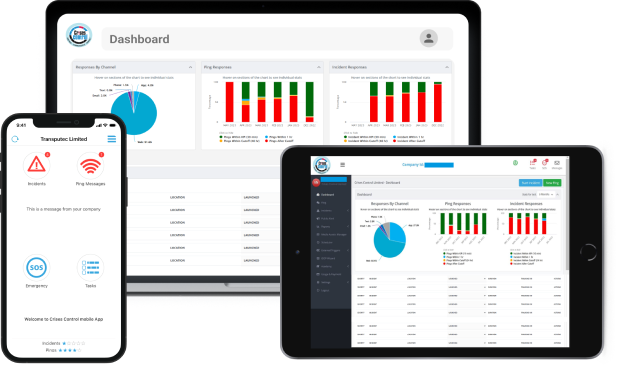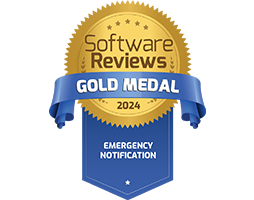Written by Anneri Fourie | Marketing Executive
In today’s rapidly evolving technological landscape, staying ahead of tech changes is crucial for effective business crisis management. Organisations must be agile, adaptable, and proactive to maintain resilience amidst technological advancements. This blog explores how to integrate new technologies into your crisis management plan and highlights how Crises Control can support you in this endeavour.
The Evolution of Technology and Its Impact on Business Crisis Management
Technology is no longer just a tool but a core component of modern business operations. From communication systems to data management, technological advancements influence every facet of crisis management. However, these changes also bring challenges that can impact your crisis response capabilities. Understanding the dual nature of these advancements—both their benefits and potential pitfalls—is essential for effective business crisis management.
Key Technological Trends Affecting Crisis Management
- Increased Use of Cloud Solutions: Cloud technology offers scalability and flexibility, allowing businesses to store and access critical data remotely. However, it also introduces complexities in data security and system integration.
- Advanced Communication Tools: Tools such as real-time messaging and automated alerts improve response times, but require seamless integration into existing systems.
- AI and Automation: AI-driven analytics and automated systems enhance decision-making and efficiency, but demand careful implementation to avoid disruptions.
Integrating Technology into Your Crisis Management Plan
Adapting to technological changes involves more than just adopting new tools; it requires a comprehensive approach to integrate these tools into your crisis management plan effectively. Here’s how you can achieve this:
1. Assessing Your Current Technology Landscape
Before integrating new technologies, evaluate your existing systems to identify strengths and weaknesses. This assessment should include:
- System Performance: Evaluate how well your current technology supports crisis management.
- Compatibility: Check for compatibility issues with new technologies.
- User Feedback: Gather input from users to identify any pain points or areas for improvement.
2. Developing an Integration Plan
Once you have assessed your technology landscape, develop a structured plan to incorporate new tools:
- Set Clear Objectives: Define what you aim to achieve with the new technology. For instance, improved communication, faster data access, or enhanced security.
- Choose the Right Tools: Select technologies that align with your objectives and integrate well with your existing systems.
- Create a Roadmap: Develop a detailed roadmap for implementation, including timelines, resources, and milestones.
3. Testing and Validation
Effective integration requires thorough testing and validation to ensure that new technologies function as expected:
- Conduct Simulations: Use simulations and tabletop exercises to test how new technologies perform under crisis conditions.
- Gather Feedback: Collect feedback from users and stakeholders to identify any issues or areas for improvement.
- Adjust and Refine: Make necessary adjustments based on test results and feedback to ensure seamless integration.
Building Resilience Through Adaptability
Adaptability is key to maintaining resilience in the face of technological changes. Here’s how you can foster adaptability in your crisis management approach:
1. Foster a Culture of Flexibility
Encourage a culture that embraces change and innovation:
- Promote Continuous Learning: Offer training and development opportunities to keep your team updated on new technologies.
- Encourage Innovation: Create an environment where new ideas and solutions are welcomed and explored.
2. Implement Adaptive Policies and Procedures
Develop policies and procedures that allow for flexibility and quick adaptation:
- Regular Reviews: Conduct regular reviews of your crisis management plan and technology to identify areas for improvement.
- Update Procedures: Update procedures and protocols to reflect technological advancements and changes.
3. Create a Feedback Loop
Establish a feedback loop to continuously improve your crisis management plan:
- After-Action Reviews: Use after-action reviews to analyse performance and identify lessons learned.
- Stakeholder Input: Gather input from stakeholders to refine your approach and address any emerging issues.
How Crises Control Supports Your Adaptation to Technology Changes
Crises Control offers a comprehensive suite of solutions designed to enhance your crisis management capabilities and support your adaptation to technological changes:
1. Seamless Technology Integration
Crises Control’s platform is designed to integrate seamlessly with your existing systems:
- Cloud-Based Infrastructure: Our cloud-based solutions ensure that your crisis management tools are always accessible, even during system disruptions.
- Flexible Integration: Easily integrate new technologies with our platform, maintaining operational continuity.
2. Real-Time Alerts and Notifications
Our system provides real-time alerts and notifications to keep your team informed and responsive:
- Instant Communication: Send and receive real-time updates to ensure that everyone is aware of the latest developments.
- Automated Alerts: Automate notifications to streamline your response and reduce manual effort.
3. Comprehensive Support and Training
Crises Control offers extensive support and training to help you make the most of our solutions:
- Personalised Training: Receive tailored training to ensure your team can effectively use our platform and adapt to new technologies.
- Ongoing Support: Access continuous support to address any issues and ensure smooth operation.
Practical Tips for Managers
To effectively manage technology changes in your crisis management plan, consider the following tips:
- Stay Informed: Keep up with technological advancements and trends to anticipate potential impacts on your crisis management plan.
- Engage Stakeholders: Involve key stakeholders in technology planning and decision-making to ensure alignment and support.
- Regularly Review and Update: Conduct regular reviews of your technology and crisis management practices to keep them current and effective.
Conclusion
Adapting to technological changes is crucial for maintaining resilience in your business crisis management plan. By implementing the right strategies and leveraging solutions like Crises Control, you can effectively integrate new technologies and enhance your crisis response capabilities.
To learn more about how Crises Control can support your adaptation to technology changes, contact us today to get a free personalised demo. Discover how our solutions can help you stay resilient and adaptable in the face of evolving technology.
Request a FREE Demo








